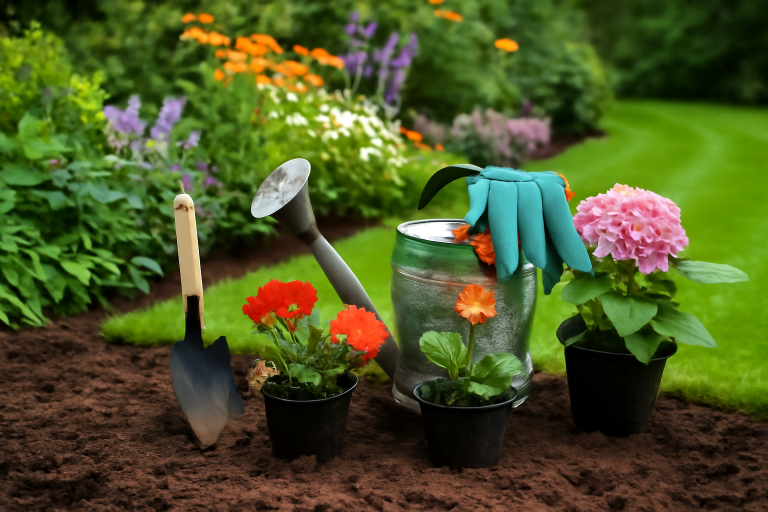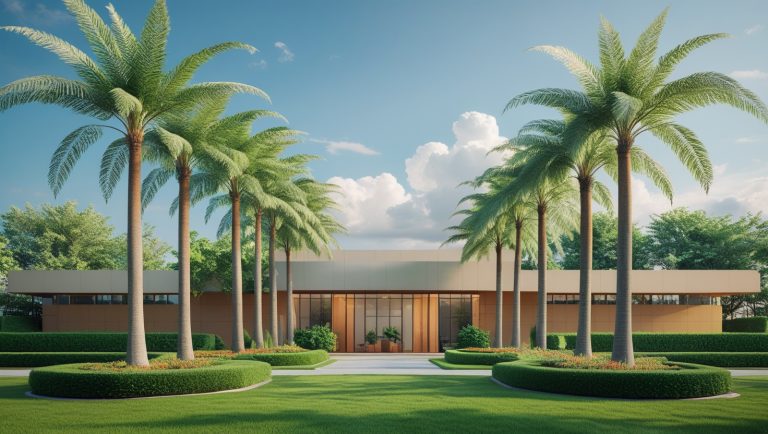Vertical gardens, or green walls, are an innovative and space-efficient way to incorporate greenery into industrial environments. With industrial spaces often characterized by limited floor space, high ceilings, and large open areas, vertical gardens provide a creative solution to introduce plants while saving space. In this article, we’ll explore creative solutions for vertical gardens in industrial spaces, discussing their benefits, design ideas, and practical considerations.
1. What is a Vertical Garden?
A vertical garden is a gardening technique that involves growing plants on a vertical surface, such as a wall or structure, rather than the traditional horizontal soil bed. Vertical gardens can be installed indoors or outdoors, making them highly versatile for various industrial spaces. They use various systems like panels, grids, hydroponics, and trellises to support the plants.
The popularity of vertical gardens has surged due to their ability to transform large, stark spaces into lush, vibrant environments. In industrial settings, they can turn plain walls or empty corners into focal points, improve air quality, and enhance the overall aesthetic.
2. Benefits of Vertical Gardens in Industrial Spaces
There are several advantages to incorporating vertical gardens in industrial environments:
- Space Optimization: One of the main benefits of vertical gardens is their ability to maximize limited space. Since industrial areas often have high ceilings and large, open floors, vertical gardens allow you to utilize the vertical space instead of consuming precious floor area.
- Improved Air Quality: Plants are natural air purifiers, and vertical gardens can improve the air quality in industrial spaces by absorbing toxins, reducing dust, and increasing oxygen levels. This is especially important in environments with machinery and industrial emissions.
- Aesthetic Appeal: Industrial spaces, often characterized by harsh materials like concrete, steel, and metal, can feel cold and impersonal. Vertical gardens add a touch of nature, breaking up the monotony of the industrial environment. They soften the space, create visual interest, and contribute to a more welcoming and comfortable atmosphere.
- Noise Reduction: Large industrial spaces can often be noisy, with echoes from machinery and equipment. Vertical gardens help absorb sound, reducing noise levels and making the workspace more conducive to focus and productivity.
- Energy Efficiency: Green walls can contribute to energy efficiency by helping regulate temperature. Plants provide natural insulation, which can help maintain a more consistent temperature and reduce heating or cooling costs.
- Enhanced Well-being: Studies have shown that incorporating plants into workspaces can improve employee mood, reduce stress, and increase overall well-being. Vertical gardens can create a calming and inspiring environment, improving the quality of life for those working in the space.
3. Creative Design Ideas for Vertical Gardens
There are several ways to design and integrate a vertical garden into an industrial space. Below are some creative solutions to inspire you:
- Modular Green Wall Panels: Modular green wall panels are easy to install and offer a flexible solution for creating vertical gardens in industrial spaces. These panels come in various sizes and configurations, allowing you to cover large surfaces with minimal effort. They are typically designed to accommodate a wide range of plants, from small herbs to larger foliage. Modular systems can also be combined to create patterns or specific shapes, adding a unique artistic touch to the space.
- Hydroponic Vertical Gardens: Hydroponic systems allow plants to grow without soil, using nutrient-rich water instead. These systems are ideal for industrial environments where soil-based gardening may not be practical. Hydroponic vertical gardens can be set up on walls using vertical towers or towers suspended in the air, which makes them ideal for narrow or hard-to-reach spaces.
- Trellis or Lattice Systems: If you’re working with climbing plants such as ivy or jasmine, using a trellis or lattice system is an excellent solution. You can install the trellis on a wall, and the climbing plants will grow vertically, covering the surface with greenery. This is a simple and cost-effective way to create a vertical garden, and it works particularly well for adding some greenery without using complicated systems.
- Living Green Walls: Living green walls are full vertical gardens created by planting directly into a wall-mounted frame or structure. These can be planted with a variety of species, from succulents to flowering plants. Living walls require more maintenance but offer a stunning, lush look. They can also provide more biodiversity by allowing the integration of different types of plants that thrive in industrial spaces, like ferns, mosses, and tropical plants.
- Vertical Planters or Pocket Planters: Another creative solution for vertical gardens is the use of pocket planters. These are fabric or felt planters that can be mounted on a wall in a grid pattern. The pockets hold soil, allowing plants to grow vertically. This system is ideal for smaller spaces and can be customized to fit any industrial wall, adding a burst of green without taking up much room.
- Recycled and Repurposed Materials: An eco-friendly way to create a vertical garden is by using recycled and repurposed materials. Old wooden pallets, crates, and containers can be transformed into vertical garden planters. These materials can provide a rustic or industrial-chic aesthetic, which aligns well with the nature of an industrial space. Additionally, using recycled materials reduces waste and supports sustainability.
4. Plants Suited for Vertical Gardens in Industrial Spaces
Choosing the right plants for a vertical garden is crucial for success. Here are some of the best plant options for industrial vertical gardens:
- Succulents: Succulents like aloe vera, jade plants, and echeveria are ideal for vertical gardens in industrial spaces. They require minimal maintenance, can thrive in low-light conditions, and are drought-tolerant, making them perfect for areas with irregular watering schedules.
- Ivy: English ivy and other climbing varieties are great for trellis systems or living walls. They thrive in low light and can quickly cover a vertical surface, providing a lush, green appearance.
- Ferns: Ferns, such as Boston ferns or bird’s nest ferns, are ideal for vertical gardens due to their ability to thrive in low-light, humid environments. Their feathery, cascading leaves add a touch of softness to industrial spaces.
- Spider Plants: Spider plants are resilient and adaptable, making them an excellent choice for vertical gardens. They thrive in a range of lighting conditions and can easily grow in smaller spaces.
- Philodendron: Known for its trailing vines and heart-shaped leaves, philodendron is perfect for creating a dense, green wall. It thrives in low light and can be trained to grow along trellises or in hanging planters.
5. Installing Vertical Gardens in Industrial Spaces
To successfully install a vertical garden in an industrial space, follow these steps:
- Choose the Right Location: Identify the best location for your vertical garden. Consider factors like light exposure, temperature, humidity, and accessibility. Avoid areas with high foot traffic or places where the garden might be obstructed.
- Install the Support System: Depending on the type of vertical garden you choose, install the appropriate support system. For modular systems, follow the manufacturer’s instructions. For living walls or hydroponics, make sure the structure is securely mounted and can support the weight of the plants and water.
- Select the Plants: Choose plants that are appropriate for the environmental conditions and the design of your garden. Be mindful of their growth habits, light requirements, and water needs.
- Maintenance: Regular care is essential for vertical gardens to thrive. Make sure to water the plants appropriately, check for pests, and clean the garden regularly. If using a hydroponic system, monitor the nutrient levels to ensure optimal plant health.
6. Conclusion
Vertical gardens provide a creative and effective solution for bringing greenery into industrial spaces while making the most of limited space. They offer numerous benefits, including improved air quality, noise reduction, aesthetic appeal, and energy efficiency. Whether you choose modular panels, hydroponic systems, or repurposed materials, vertical gardens can transform an industrial environment into a vibrant, sustainable workspace.
By selecting the right plants and designing a garden that suits the space, you can create a green oasis in your industrial space that promotes well-being, enhances productivity, and adds beauty to your environment.

